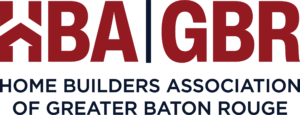
According to the Unemployment Insurance Weekly Claims Report, released by the U.S. Department of Labor, the number of initial claims for unemployment insurance hit 3.2 million for the week ending May 2nd, bringing the total to 33.5 million over the past seven weeks.
In the week ending May 2nd, the number of people who applied for unemployment benefits, known as jobless claims, was at a seasonally adjusted level of 3,169,000, a decrease of 677,000 from the previous week’s revised level of 3,846,000 claims. The four-week moving average decreased to 4,173,500, from a revised average of 5,035,000 in the previous week. After it hit a record of 6.9 million for the week ending March 28th, the number of jobless claims has declined gradually in the following weeks. By the week ending May 2nd, the number of jobless claims was less than half of the peak of 6.9 million, and the seven-week’s jobless claims totaled 33.5 million.
The seasonally adjusted insured unemployment rate increased by 3.1 percentage points to 15.5% for the week ending April 25th. The number for seasonally adjusted insured unemployment increased to 22,647,000 during the week ending April 25th, from an upward revised level of 18,011,000 in the previous week. It was the highest level of seasonally adjusted insured unemployment in the history of the seasonally adjusted series.

The unadjusted number of initial claims, released by the U.S. Department of Labor, totaled 3,495,703 in the week ending April 25th, a decrease of 785,945 from the previous week. The chart below presents the top 10 states ranked by the number of initial claims for the week ending April 25th. Florida, California, Georgia, Texas, and New York reported the most initial claims. Florida led the way with 433,103 claims, followed by California with 325,343 claims and Georgia with 266,565 claims. The number of jobless claims in these 10 states accounted for about 56% of the total number of jobless claims in the week ending April 25th.
The trending of initial claims was mixed. For the week ending April 25th, Washington (+56,030), Georgia (+19,562), New York (+14,229), Oregon (+12,091), and Alabama (+8,534) reported the largest increases in initial claims, while California (-203,017), Florida (-73,567), Connecticut (-69,767), New Jersey (-68,173), and Pennsylvania (-66,698) had the largest decreases in initial claims.










 Results from the latest Housing Trends Report also show that the time active home buyers are spending searching for a home continues to rise. In the first quarter of 2020, 56% of actively engaged buyers reported having spent at least 3 months searching, compared to 53% a year earlier. This marks the fifth consecutive year-over-year gain in the share of active buyers who have spent upwards of 3 months looking for a home to buy.
Results from the latest Housing Trends Report also show that the time active home buyers are spending searching for a home continues to rise. In the first quarter of 2020, 56% of actively engaged buyers reported having spent at least 3 months searching, compared to 53% a year earlier. This marks the fifth consecutive year-over-year gain in the share of active buyers who have spent upwards of 3 months looking for a home to buy. * The
* The 











